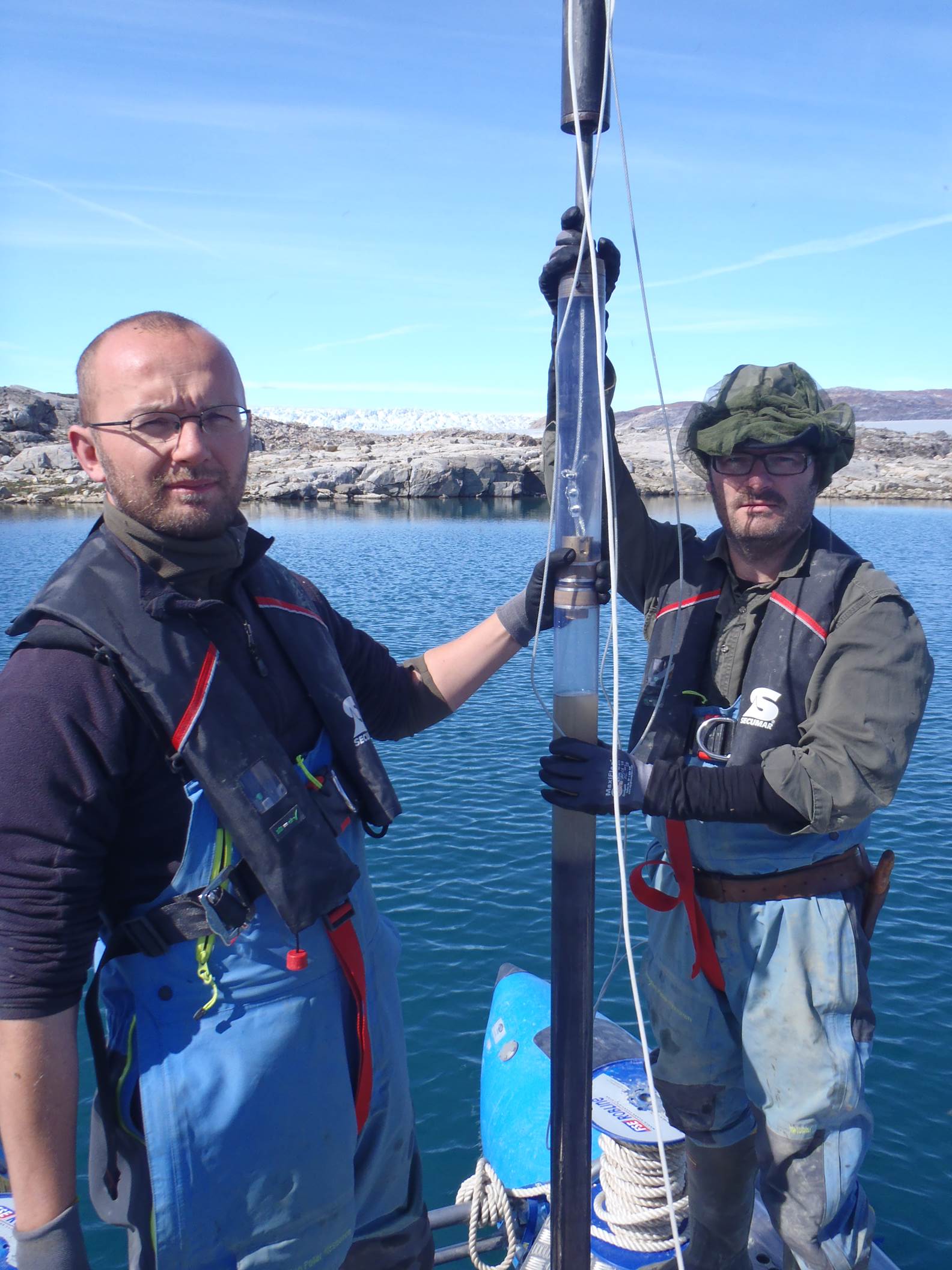Bedrock and lake sediment tell the story of melting ice
Associate professor Nicolaj Krog Larsen from Department of Geoscience and the Arctic Research Center has just been granted DKK 7.0 million from VILLUM FONDEN. The grant will be used for a large-scale research project investigating how the inland ice has reacted to natural climate variations in North-East Greenland during the past 10,000 years.

Large glaciers
”We focus our work on the large outlet glaciers in North-East Greenland: Nioghalvfjerdsfjorden, Storstrømmen and Zachariae. Together they represent one large ice stream which is more than 600 km long and which alone accounts for approx. 7% of the current mass loss of the inland ice,” says Nicolaj Krog Larsen.
The researchers have developed new techniques for dating the age of the bedrock. ”We are able to measure for how long the rocks have been exposed to cosmic radiation from the atmosphere, and our purpose is to measure how quickly the inland ice retreated after the end of the last glaciation,” says Nicolaj Krog Larsen.
Nicolaj Krog Larsen and his research team will also gather sediment cores from lakes located in the so-called marginal zone – very close to the inland ice. Here, they can investigate how the climate and the ice edge have fluctuated during the past 10,000 years.
“The sediment cores are of particular interest as they provide information on how the inland ice reacted approx. 5,000–8,000 years ago in a climate that was much warmer than today. This has not been possible before,” says Nicolaj Krog Larsen.
Ice cap model
”The new data will be used as input in an ‘ice cap model’ which will tell us how far the inland ice retreated during the latest warming period and in this way contributed to the global changes in sea levels. These results will show how sensitive the inland ice was to natural climate variations and this can be used as an indicator of what to expect in the future in consequence of global warming,” says Nicolaj Krog Larsen.
The melting of the large glaciers contributes significantly to the global increase in sea levels, which are expected to rise by up to one metre within the next hundred years.
Logistically it is not an easily accessible place that the researchers have chosen as their work locality. It requires access to a helicopter to fly in goods, equipment, provisions and tents to the places that are difficult to reach. The researchers are enthusiastic about the new research centre at Station Nord run by Aarhus University. Particularly during 2015–2016 Station Nord will a site of much activity from where the project’s main efforts in North-East Greenland will take place.
Contact:
Assistant professor Nicolaj Krog Larsen, Department of Geoscience, Aarhus University. E-mail: nkl@geo.au.dk, tel.: +45 87156412 / +45 28992586.
